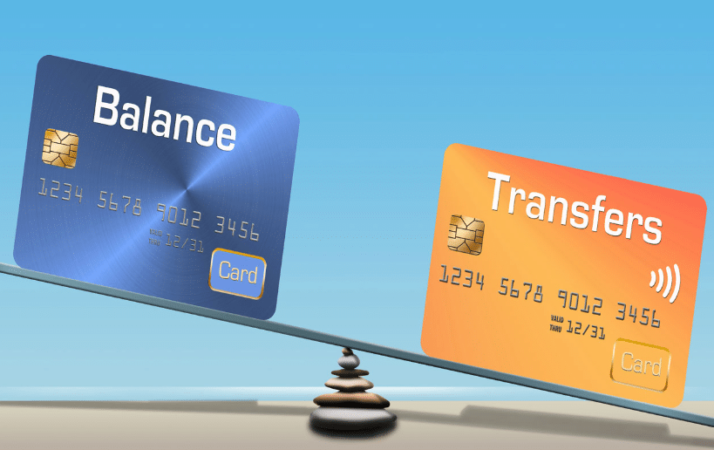
24 month balance transfer credit cards offer a tempting solution for those burdened by high-interest debt. These cards provide a temporary reprieve from crippling interest charges, allowing you to focus on paying down your balance within a specified period. However, while the allure of 0% APR for 24 months might seem enticing, it’s crucial to understand the intricacies of these offers before diving in.

Understanding the mechanics of balance transfers, the associated fees, and the importance of strategic repayment are key to successfully utilizing this financial tool. This guide delves into the world of 24 month balance transfer credit cards, exploring their potential benefits, drawbacks, and the factors to consider before making a decision.
What is a 24-month balance transfer credit card?

A 24-month balance transfer credit card is a type of credit card that allows you to transfer outstanding balances from other credit cards to it. The key feature of this card is that it offers a promotional period, typically lasting 24 months, during which you can avoid paying interest on the transferred balance. This can be a valuable tool for managing debt and potentially saving money on interest charges.
Balance Transfers Explained
A balance transfer involves moving your outstanding debt from one credit card to another. This is typically done by contacting the new card issuer and requesting a balance transfer. The issuer will then send you a check or deposit the funds directly to your existing credit card account.
Benefits of a 24-Month Balance Transfer Credit Card
- Lower Interest Rates: The primary benefit of a balance transfer card is the opportunity to reduce your interest payments. During the promotional period, you’ll often enjoy a 0% interest rate on the transferred balance. This can significantly lower your monthly payments and allow you to pay down your debt faster.
- Consolidation of Debt: A balance transfer card can simplify your debt management by consolidating multiple balances into one account. This can make it easier to track your payments and ensure that you’re making timely payments on all of your debts.
- Improved Credit Utilization: By transferring balances to a new card, you can potentially improve your credit utilization ratio. This ratio represents the amount of credit you’re using compared to your total available credit. A lower credit utilization ratio can have a positive impact on your credit score.
Potential Drawbacks and Risks
- Balance Transfer Fees: Most balance transfer cards charge a fee for transferring balances. This fee is typically a percentage of the transferred amount, so it’s important to factor this into your calculations to ensure that you’re truly saving money.
- Promotional Period Expiration: The 0% interest rate on a balance transfer card is usually temporary. Once the promotional period ends, you’ll be charged interest at the card’s standard rate, which can be significantly higher than the promotional rate. It’s crucial to develop a plan to pay off the balance before the promotional period expires to avoid accruing substantial interest charges.
- Potential for Overspending: Having a new credit card with a high credit limit can tempt some individuals to overspend. This can lead to further debt accumulation and financial strain. It’s essential to use a balance transfer card responsibly and avoid making unnecessary purchases.
How do 24-month balance transfer credit cards work?

Balance transfer credit cards allow you to move outstanding balances from other credit cards to a new card, potentially saving money on interest charges. These cards typically offer a promotional period during which you can transfer your balance and pay no interest.
Terms and Conditions of a Balance Transfer Offer, 24 month balance transfer credit card
Balance transfer offers usually come with specific terms and conditions that you need to understand before transferring your balance.
- Balance Transfer Period: This is the period during which you can transfer your balance without paying interest. It typically lasts for 24 months, but can vary depending on the card issuer.
- Balance Transfer Fee: A percentage of the transferred balance is typically charged as a fee. This fee can range from 3% to 5% of the transferred amount.
- Minimum Payment Requirement: You must make a minimum monthly payment, which is typically a percentage of your outstanding balance. Failing to meet this requirement may result in the loss of the promotional period.
- Credit Limit: The maximum amount you can transfer is limited by the credit limit of the new card.
- Grace Period: This is the period after your billing cycle ends and before interest starts accruing on new purchases. This period is typically 25 days.
Interest Rates and Fees
Interest rates and fees are crucial aspects to consider when evaluating a balance transfer offer.
- Balance Transfer APR: This is the annual percentage rate charged on your transferred balance after the promotional period ends. It can vary widely depending on your credit score and the card issuer.
- Regular APR: This is the interest rate charged on new purchases made after the balance transfer. It is usually higher than the balance transfer APR.
- Late Payment Fee: This is charged if you miss a payment deadline.
- Cash Advance Fee: This is charged if you withdraw cash from your credit card.
Process of Transferring a Balance
Transferring a balance to a new credit card is a relatively straightforward process.
- Apply for a Balance Transfer Credit Card: You can apply online, by phone, or through a credit card issuer’s website.
- Get Approved: The credit card issuer will review your application and determine if you are approved for the card.
- Request a Balance Transfer: Once approved, you can request a balance transfer by providing the account number and balance of the card you wish to transfer.
- Receive Funds: The credit card issuer will transfer the balance from your old card to your new card. This may take a few business days.
Alternatives to 24-month balance transfer credit cards
While 24-month balance transfer credit cards can be a useful tool for debt consolidation, they’re not the only option available. Exploring alternative approaches can help you find the best strategy for managing your debt effectively.
Debt Consolidation Loans
Debt consolidation loans combine multiple debts into a single loan with a lower interest rate. This can simplify your repayment process and potentially save you money on interest charges.
- Advantages:
- Lower interest rates compared to some credit cards
- Simplified repayment with a single monthly payment
- Potential for lower monthly payments
- Disadvantages:
- May not be available to borrowers with poor credit
- Can be a longer-term commitment
- May involve origination fees or closing costs
For example, if you have several credit cards with high interest rates, a debt consolidation loan could help you consolidate those balances into a single loan with a lower interest rate. This could potentially save you money on interest charges over time.
Balance Transfer Credit Cards with Longer Terms
Some balance transfer credit cards offer promotional periods beyond 24 months, sometimes extending to 36 months or even longer. These cards can provide additional time to pay down your debt and potentially save on interest.
- Advantages:
- Extended promotional periods for interest-free balance transfers
- Opportunity to make larger payments and pay down debt faster
- Disadvantages:
- Higher interest rates after the promotional period
- May involve balance transfer fees
- Limited eligibility based on credit score
For example, if you need more time to pay off your debt, a balance transfer credit card with a 36-month promotional period could provide you with the flexibility to manage your repayments over a longer timeframe.
Debt Management Plans
Debt management plans (DMPs) are programs offered by credit counseling agencies that help you negotiate lower interest rates and monthly payments with your creditors.
- Advantages:
- Lower monthly payments
- Reduced interest rates
- Professional guidance and support
- Disadvantages:
- Fees associated with the program
- May affect your credit score
- Limited eligibility based on debt-to-income ratio and credit score
For example, if you’re struggling to make your minimum payments and are overwhelmed by debt, a debt management plan can provide a structured approach to managing your finances and reducing your debt burden.
Debt Settlement
Debt settlement involves negotiating with creditors to settle your debt for a lower amount than what you owe. This can be a risky strategy, as it can negatively impact your credit score and may not be successful in all cases.
- Advantages:
- Potential to pay off debt for less than the full amount
- Can reduce your monthly payments
- Disadvantages:
- Can significantly damage your credit score
- May involve fees or upfront payments
- No guarantee of success
For example, if you’re facing overwhelming debt and are unable to make your payments, debt settlement may be an option to consider. However, it’s important to weigh the risks and benefits carefully before pursuing this strategy.
Personal Loans
Personal loans can be used to consolidate debt, similar to debt consolidation loans. They can offer lower interest rates than credit cards and can be a good option for those with good credit.
- Advantages:
- Lower interest rates compared to some credit cards
- Fixed monthly payments
- Potential for lower monthly payments
- Disadvantages:
- May not be available to borrowers with poor credit
- Can be a longer-term commitment
- May involve origination fees or closing costs
For example, if you have a mix of high-interest debts, a personal loan could help you consolidate those balances into a single loan with a lower interest rate. This could potentially save you money on interest charges over time.
Home Equity Loans or Lines of Credit
Home equity loans or lines of credit (HELOCs) use your home’s equity as collateral to secure a loan. They typically have lower interest rates than credit cards, but they also carry the risk of losing your home if you default on the loan.
- Advantages:
- Lower interest rates compared to credit cards
- Tax-deductible interest in some cases
- Large loan amounts available
- Disadvantages:
- Risk of losing your home if you default on the loan
- May involve closing costs
- Can be a long-term commitment
For example, if you have significant equity in your home and need a large loan amount, a home equity loan or HELOC could be a viable option. However, it’s crucial to carefully consider the risks involved before taking on this type of debt.
Final Wrap-Up: 24 Month Balance Transfer Credit Card

Navigating the landscape of balance transfer credit cards requires careful consideration. While these cards can be a valuable tool for debt management, they are not a magic bullet. By understanding the intricacies of balance transfers, carefully selecting the right card, and developing a robust repayment strategy, you can potentially leverage these offers to your advantage and pave the way towards financial freedom. Remember, knowledge is power, and informed decision-making is the key to success.
FAQ Guide
What happens after the introductory period ends?
After the 24-month introductory period, the standard APR for the card will apply to your remaining balance. This APR is usually significantly higher than the introductory rate, so it’s crucial to pay off as much of the balance as possible within the promotional period.
Can I transfer my entire balance?
The maximum amount you can transfer to a balance transfer credit card is usually capped. Check the terms and conditions of the card to determine the maximum transfer limit.
Are there any penalties for paying off the balance early?
Most balance transfer credit cards don’t have prepayment penalties, so you’re free to pay off the balance early without incurring additional fees.





